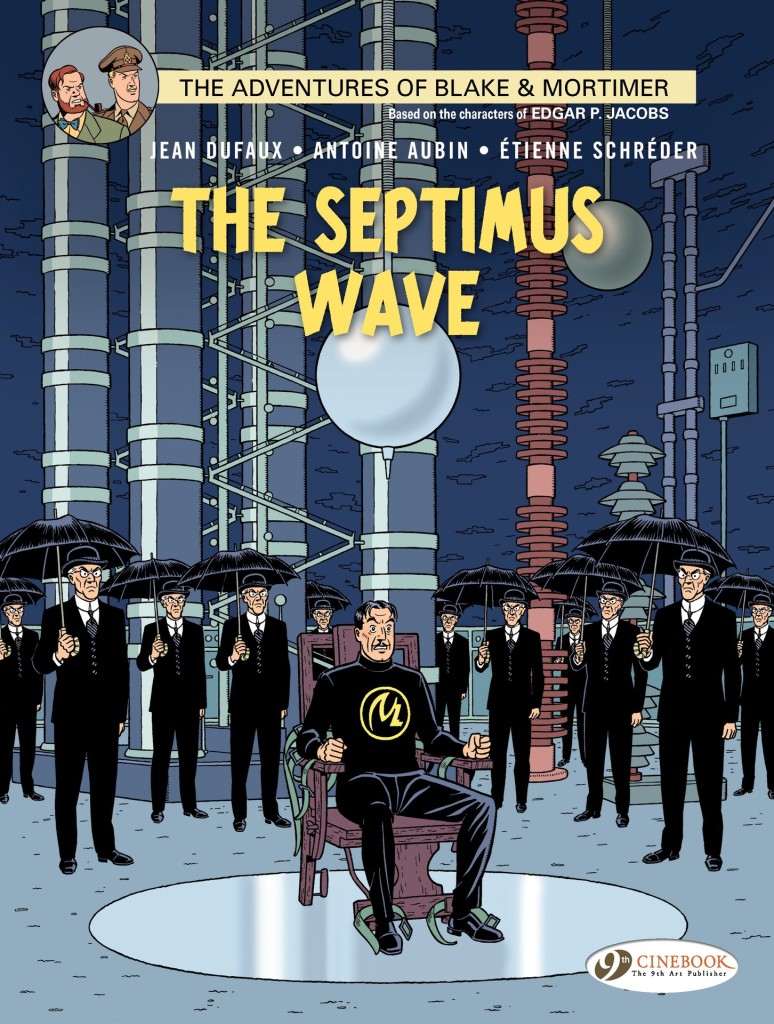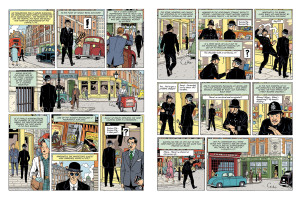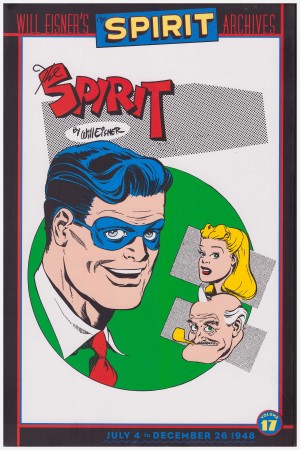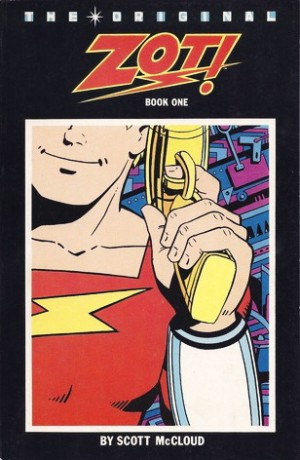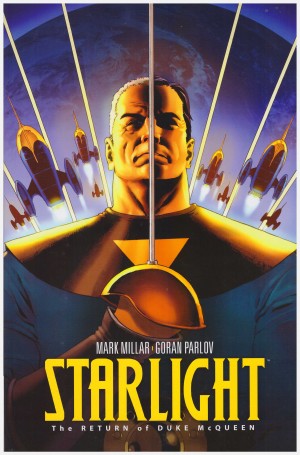Review by Woodrow Phoenix
Edgar P. Jacobs wrote and drew eight stories (in eleven albums) of The Adventures of Blake & Mortimer between 1947 and 1987, with the final adventure Les trois formules du professeur Satō (Professor Satō’s Three Formulas) completed after his death from the material he left behind. Subsequent volumes written and drawn by a number of writer/artist teams have explored the backstories of his two heroes, filling in the gaps or using events hinted at in his stories. For the 16th Blake and Mortimer story, writer Jean Dufaux and artists Antoine Aubin and Etienne Schréder have returned to the most successful of Jacobs’ books and devised a sequel to The Yellow “M”.
The Septimus Wave begins promisingly, with a group of four conspirators meeting to discuss their admiration for the genius of Professor Septimus and their plan to revive his work. One of them, Lady Rowena is the first of two female protagonists which is a welcome change – of all Jacobs’ stories only The Time Trap had a speaking part for a woman (the first two stories featured no women; the third, two panels with Mrs Benson, the landlady at 99A Park Lane; the fourth, no women; the fifth, nine panels of maids and cooks; the seventh, one panel of bystanders). Their plan hinges on once again entrapping Colonel Olrik, who is trying to escape from the memory of his enslavement at Septimus’ hands in an opium den hidden away in Limehouse. Elsewhere, Professor Mortimer has also secretly reconstructed the infernal machine, and when Captain Blake finds out what he’s up to, he strongly disapproves.
There’s some striking imagery in this story, from a beautifully drawn sequence where a reanimated Professor Septimus walks the streets of Bloomsbury, to the incredible discovery Blake makes beneath King’s Cross; and a nightmarish chase involving hundreds of Septimuses – just like the Burly Brawl from The Matrix! Dufaux carefully omits any mention of dates, but it’s long enough after the events of The Yellow “M” for a bookshop in Bloomsbury to be displaying a bestseller about the affair in their window… which leads to the unconvincing aspects of this story, if you’re a stickler for details. And if you’re an E. P. Jacobs fan then you probably are. The four plotters have knowledge of Septimus and his work that they could not possibly have, since only Mortimer knew the extent of the mad professor’s achievements. The nature of their plan, the acquisition and operation of the Mega Wave machine, a government plot to hide a potential secret weapon, none of it ties up, and the last sighting of Olrik is particularly unsatisfying.
It’s a bold move to write a companion piece to one of the most popular Franco-Belgian books ever, and although Dufaux, Aubin and Schréder don’t quite pull it off, you have to give them credit for trying. The Septimus Wave is an enjoyable read, but it’s like a tribute act that just reminds you how good the original is. Six years later, perhaps to resolve all the threads left dangling at the end of this book, Dufaux returned with Schréder and a new artist, Christian Cailleaux, to deliver a second chapter, The Call of the Moloch.
